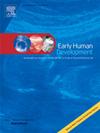Voice self-perception and acoustic parameters in transgirls adolescent related to pubertal stage blockage
IF 2
3区 医学
Q2 OBSTETRICS & GYNECOLOGY
引用次数: 0
Abstract
Background
Trans girls may initiate early puberty blockers once puberty has started in order to prevent the development of masculine secondary sexual characteristics. Depending on how early the puberty blockers are administered, voice may have reached a certain degree of development and have acquired typically male acoustic and phonetic parameters, which can cause discomfort and affect the adolescent's quality of life.
Purpose
The aim of the present study was to (1) determine if there are differences in discomfort with the self-perceiver voice according to the moment of puberty block (PB), and (2) find a relation between vocal discomfort and variables such a voice phonetic/acoustic characteristics and self-perception of voice.
Method
A cross-sectional study was carried out. Differences in vocal discomfort between a group of trans girls with early puberty block and a group with late puberty block were compared. The participants were given the Voice Handicap index (VHI-30) and the Trans Women Voice Questionnaire (TWVQ) to assess vocal discomfort. In the same way, their anthropometric, clinical and vocal data, such as FO, were collected. The Kruskal-Wallis test was used to compare the differences in the TWVQ punctuation according to the Tanner stage.
Results
The value of the fundamental frequency (FO) was 71.5 Hz higher in the early puberty block group (p < 0.001). The total scores of the questionnaires are higher in the late puberty block group (37.5 points in the TWVQ and 26 points in the VHI-30, p < 0.001 in both cases) Vocal self-perception tends to be more feminine in users with early blocked puberty (p = 0.001). There is a negative correlation between FO and puberty block age (r = 0.669) as well as with the TWVQ score (r = 0.755).
Conclusion
Early puberty blockers seem to be related to lower score in TWVQ and VHI-30. It could represent less vocal discomfort in trans girls. Acute voice seem to be more frequent in early puberty blocked because Fundamental frequency are significantly higher.
跨性别少女的声音自我知觉和声学参数与青春期阻塞的关系。
背景:为了防止男性第二性征的发展,跨性别女孩可能在青春期开始后开始使用早期青春期阻滞剂。根据青春期阻滞剂使用的时间,声音可能已经达到一定程度的发育,并获得了典型的男性声学和语音参数,这可能会导致不适并影响青少年的生活质量。目的:本研究的目的是:(1)根据青春期阻滞时刻(PB)确定自我感知者声音的不适是否存在差异,(2)发现声音不适与语音/声学特征和声音自我感知等变量之间的关系。方法:采用横断面研究。比较了青春期早期阻滞和青春期晚期阻滞的跨性别女孩在声音不适方面的差异。参与者被给予声音障碍指数(VHI-30)和跨性别女性声音问卷(TWVQ)来评估声音不适。以同样的方式,收集了他们的人体测量、临床和声音数据,如FO。采用Kruskal-Wallis检验比较TWVQ标点符号在Tanner阶段的差异。结果:青春期早期阻断组的基本频率(FO)升高71.5 Hz (p)。结论:青春期早期阻断与TWVQ和VHI-30评分较低有关。它可以代表跨性别女孩较少的声音不适。尖锐的声音在青春期早期似乎更频繁,因为基本频率明显更高。
本文章由计算机程序翻译,如有差异,请以英文原文为准。
求助全文
约1分钟内获得全文
求助全文
来源期刊

Early human development
医学-妇产科学
CiteScore
4.40
自引率
4.00%
发文量
100
审稿时长
46 days
期刊介绍:
Established as an authoritative, highly cited voice on early human development, Early Human Development provides a unique opportunity for researchers and clinicians to bridge the communication gap between disciplines. Creating a forum for the productive exchange of ideas concerning early human growth and development, the journal publishes original research and clinical papers with particular emphasis on the continuum between fetal life and the perinatal period; aspects of postnatal growth influenced by early events; and the safeguarding of the quality of human survival.
The first comprehensive and interdisciplinary journal in this area of growing importance, Early Human Development offers pertinent contributions to the following subject areas:
Fetology; perinatology; pediatrics; growth and development; obstetrics; reproduction and fertility; epidemiology; behavioural sciences; nutrition and metabolism; teratology; neurology; brain biology; developmental psychology and screening.
 求助内容:
求助内容: 应助结果提醒方式:
应助结果提醒方式:


